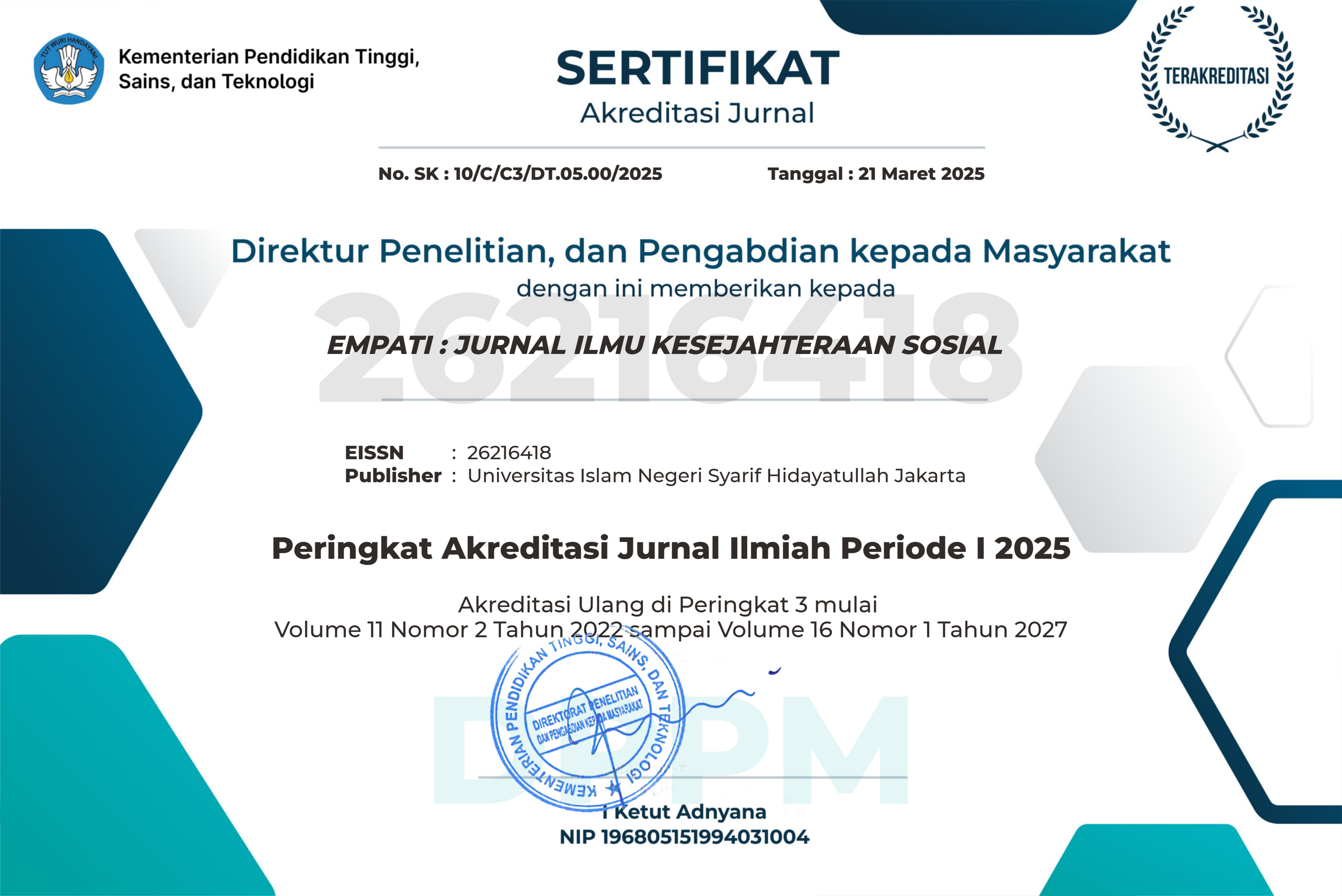Submissions
Submission Preparation Checklist
All submissions must meet the following requirements.
- The submission has not been previously published, nor is it before another journal for consideration (or an explanation has been provided in Comments to the Editor).
- The submission file is in OpenOffice, Microsoft Word, RTF, or WordPerfect document file format.
- Where available, URLs for the references have been provided.
- The text is single-spaced; uses a 12-point font; employs italics, rather than underlining (except with URL addresses); and all illustrations, figures, and tables are placed within the text at the appropriate points, rather than at the end.
- The text adheres to the stylistic and bibliographic requirements outlined in the Author Guidelines, which is found in About the Journal.
- If submitting to a peer-reviewed section of the journal, the instructions in Ensuring a Blind Review have been followed.
Privacy Statement
Empati: Jurnal Ilmu Kesejahteraan Sosial is committed to protecting the privacy and confidentiality of personal data provided by authors, editors, reviewers, and users of this journal platform. All information collected through the Open Journal Systems (OJS) platform is used solely for:
-
Communication throughout the editorial and publication process
-
Administrative purposes related to scholarly publishing
-
Improving the quality and functionality of journal services
Personal data collected may include names, affiliations, email addresses, and contact information. This data will not be sold, shared, or used for purposes other than those previously stated, except where required by applicable laws and regulations.
The journal’s system implements security and technical safeguards to protect personal information from unauthorized access, loss, manipulation, or misuse. User data is also protected under the double-blind peer review framework, ensuring that reviewer identities remain confidential.
By registering or submitting manuscripts to this journal, users agree to the terms outlined in this Privacy Statement. Empati: Jurnal Ilmu Kesejahteraan Sosial reserves the right to revise this policy as necessary and will notify users through the official journal website if changes occur.


























